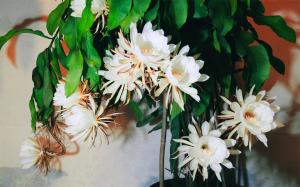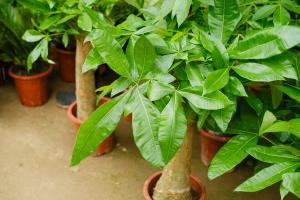Introduction
When it comes to taking care of plants, we often assume that watering them regularly is necessary. However, when plants enter a state of dormancy, the rules of care change. In this article, we will explore the topic of watering potted plants in dormancy.
What is Dormancy?
Dormancy is a state of rest that many plants enter when the conditions are not suitable for growth. This is especially common during the winter months when temperatures drop and daylight hours decrease. During dormancy, plants slow down their metabolic processes, and their water requirements decrease significantly. Some plants even shed their leaves and enter a complete state of rest.
Watering Potted Plants in Dormancy
When it comes to watering potted plants in dormancy, the general rule is to water them sparingly. Overwatering can lead to root rot, which can ultimately kill the plant. However, it is essential to monitor the soil moisture regularly. You should avoid letting the soil completely dry out, as this can cause stress to the plant. Instead, keep the soil slightly damp but not saturated.
Factors Affecting Watering Needs
While the general rule for watering potted plants in dormancy is to do so sparingly, it is essential to consider the unique needs of each plant. Factors such as the plant species, the size of the pot, the room temperature, and the humidity levels can all affect the watering needs of the plant. For example, a succulent plant that is in a small pot and placed in a heated room will require little water compared to a tropical plant in a large pot placed in a cooler and more humid area.
Signs of Under and Overwatering
It is essential to pay close attention to the signs that a plant is either under or overwatered. Underwatered plants will have dry and brittle leaves and may even wilt. Overwatered plants, on the other hand, will have yellowing leaves and may develop fungal growth. If you notice any of these signs, adjust your watering routine accordingly.
Conclusion
Watering potted plants in dormancy can be tricky, but it is essential for their survival. Remember to water sparingly and monitor the soil moisture regularly. Consider the unique needs of each plant and adjust your watering routine accordingly. Keep an eye out for signs of under or overwatering and make appropriate changes. By following these tips, you can ensure that your potted plants thrive even during their period of dormancy.

 how many times do yo...
how many times do yo... how many planted tre...
how many planted tre... how many pine trees ...
how many pine trees ... how many pecan trees...
how many pecan trees... how many plants comp...
how many plants comp... how many plants can ...
how many plants can ... how many plants and ...
how many plants and ... how many pepper plan...
how many pepper plan...





























